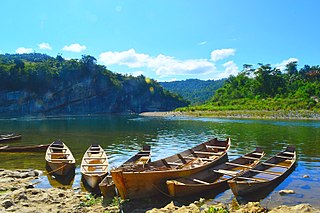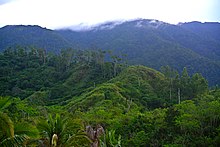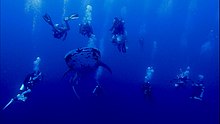
Quirino, officially the Province of Quirino, is a landlocked province in the Philippines located in the Cagayan Valley region in Luzon. Its capital is Cabarroguis while Diffun is the most populous in the province. It is named after Elpidio Quirino, the sixth President of the Philippines.

Lanao del Sur, officially the Province of Lanao del Sur, is a province in the Philippines located in the Bangsamoro Autonomous Region in Muslim Mindanao (BARMM). The capital is the city of Marawi, and it borders Lanao del Norte to the north, Bukidnon to the east, and Maguindanao del Norte and Cotabato to the south. To the southwest lies Illana Bay, an arm of the Moro Gulf.

A national grassland is an area of protected and managed federal lands in the United States authorized by Title III of the Bankhead–Jones Farm Tenant Act of 1937 and managed by the United States Forest Service. For administrative purposes, they are essentially identical to national forests, except that grasslands are areas primarily consisting of prairie. Like national forests, national grasslands may be open for hunting, grazing, mineral extraction, recreation and other uses. Various national grasslands are typically administered in conjunction with nearby national forests.

Mount Makiling is an inactive stratovolcano located in the provinces of Laguna and Batangas on the island of Luzon in the Philippines. The mountain rises to an elevation of 1,090 meters (3,580 ft) above mean sea level and is the highest feature of the Laguna Volcanic Field. The volcano has no recorded historic eruption but volcanism is still evident through geothermal features like mud spring and hot springs. South of the mountain is the Makiling–Banahaw Geothermal Plant. The Philippine Institute of Volcanology and Seismology (PHIVOLCS) classifies the volcano as "Inactive".

This is a list of the National Register of Historic Places listings in Coconino County, Arizona.

This is a list of the National Register of Historic Places listings in Hancock County, Indiana.

The Mounts Iglit–Baco Natural Park (MIBNP) is a legislated protected area of the Philippines and an ASEAN Heritage Park located in the island of Mindoro in the central Philippines. It was first established in 1970 by virtue of Republic Act No. 6148 as a national park that covered an area of 75,445 hectares surrounding Mount Iglit and Mount Baco in the interior of Mindoro. The park is the home of the largest remaining population of the critically endangered tamaraw. In 2003, the Association of Southeast Asian Nations listed it as one of its four heritage parks in the Philippines. The park has also been nominated to the Tentative List of UNESCO World Heritage Sites in 2006. In 2018, the park was designated as a "Natural Park" under the Republic Act No. 11038 or the Expanded National Integrated Protected Areas Systems (ENIPAS) Act of 2018, which increased the area to 106,656 hectares.

The Mayon Volcano Natural Park is a protected area of the Philippines located in the Bicol Region on southeast Luzon Island, the largest island of the country. The Natural park covers an area of 5,775.7 hectares, which includes its centerpiece Mayon Volcano, the most active volcano in the Philippines, and its adjacent surroundings. The volcano is also renowned for having an almost perfect cone. First protected as a National Park in 1938, it was reclassified as a Natural Park in the year 2000.
A Regional Reserve is a type of protected area used in South Australia that allows the use of natural resources in conjunction with the protected area's conservation function. This class of protected area was first used in 1988 for the Innamincka Regional Reserve and as of 2015, there are seven regional reserves that cover an area of 93,400 square kilometres (36,062 sq mi) or 9.5% of South Australia's land area.
Natural Habitat Conservation Areas or Natural Habitat Protection Areas in Japan are designated by the Ministry of the Environment to protect species of flora and fauna designated National Endangered Species, in accordance with the 1992 Act on Conservation of Endangered Species of Wild Fauna and Flora. Both managed protection zones and buffer monitoring zones are established.
Protected Forests are areas of national forest in Japan so designated in an effort to conserve biodiversity. Japan's Protected Forest system includes three categories of protected forests: Forest Biosphere Reserves; Biotic Community Protection Forests; and Rare Population Protection Forests. Some of these national forests are linked by a network of Green Corridors that are also included in the system. Established in 1915, the system was overhauled in 2015 and expanded in 2019.














